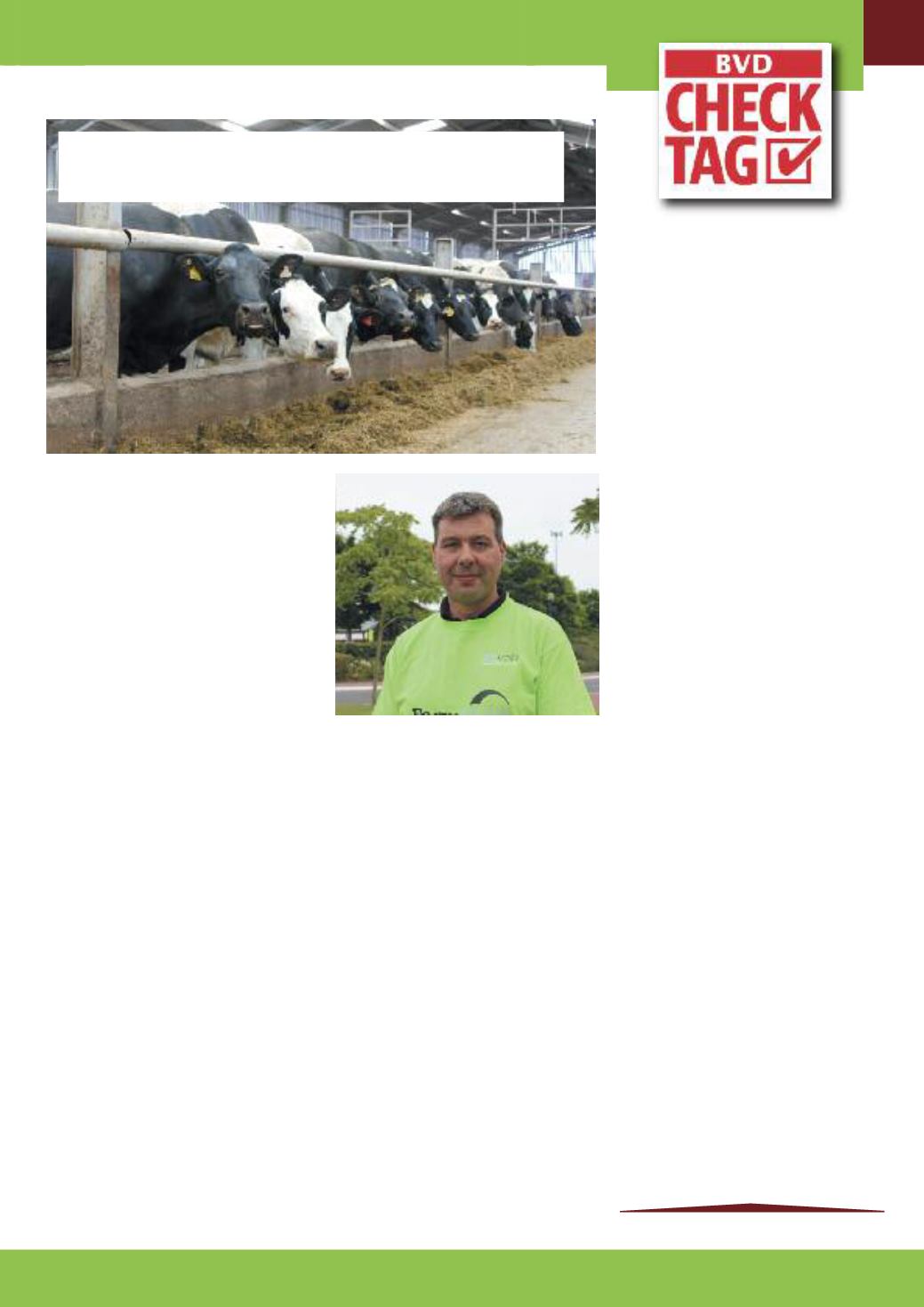
LIVESTOCK MATTERS - BVD SUPPLEMENT
witnessed the effects of the disease in
the form of early embryonic losses.
A testing and eradication programme,
including vaccination for BVD,
appeared effective as far as the milking
herd is concerned, with regular bulk
milk surveillance showing antibody
levels as expected for a vaccinated herd.
However this year a group of 13-18
month old bulling heifers reared away
from the main dairy herd tested
antibody positive for BVD exposure
following random blood testing. All
bulling heifers were then ear tag tissue
tested to check for PIs using the BVD
Check Tag white tags. All calves born to
this group will also be ear tag tissue
tested with the same tags.
The BVD Check Tag white tags are part
of a scheme launched by XLVets earlier
this year. The aim of the scheme is to
help control the spread of the disease
and provide buyers with a clear visual
prompt to check the BVD status
of an animal.
Results from the bulling heifers showed
one positive and four inconclusives.
A follow up blood test on the positive
heifer came back negative while the
two inconclusives will be tested again
when they come back home.
“We won’t keep them near any animals
that are in the first 120 days of
pregnancy as that’s the highest risk
stage (for the unborn calf being
infected). If they test positive for being
a PI we’ll cull them and their calves,”
says Mr McMinn.
Although it is not yet clear where this
BVD infection in the heifers came from,
Mr McMinn explains how he suspects it
was due to weaknesses in biosecurity
and BVD vaccine timings.
“Due to time and logistics we have not
been robust enough with our
vaccination. It’s proved problematic
vaccinating and then providing the all-
important four week gap before they
go to the bull,” he says.
For foetal protection from the BVD
vaccine they use, it’s crucial that the
vaccination programme is completed a
month before breeding.
Now that the farm is artificially
inseminating all the heifers and running
them in batches, Mr McMinn hopes it
will be easier to ensure correct
vaccination timings are achieved.
Moving forward, the farm will continue
to use ear tag tissue testing to identify
PIs. “You can get the tags as an official
ear tag or button tag - we’ll use the
button tags. They have a four digit
number on them so you can match the
animal with the tissue sample - that’s a
good way to ensure you get the test
result right,” he says.
“Ear tag tissue testing is so much easier
than blood testing as I can do it myself
rather than the vet. It’s a two minute
job and you can store the tissue
samples rather than sending
them off straight away.”
Mr McMinn likes the fact the XLVets
BVD Check Tag scheme links to a
central database and the Scottish
government’s database so you can look
up individual animal status. Although
he is not selling stock at present, he
believes having the ear tag tissue test
strategy in place and using the white
tags to show animals have been tested
will be beneficial when selling stock.
This means buyers can have confidence
when buying animals and can look up
BVD status before purchase.
Mr McMinn says his experience of BVD
on farm has highlighted the importance
of regular monitoring. “If you introduce
one PI, that’s the whole system ruined.
You have to get them out of the system.
“Also as soon as I vaccinated for BVD I
saw a major increase in fertility with
conception rates improving. Now it’s
very rare to get an abortion.”
Correct vaccination protocols are part of a focused BVD eradication
programme in the dairy herd at Lochdougan Farm, which means
ensuring all cows and heifers are vaccinated pre-gestation.
Vet Roddy Dunse of Dunmuir
Vet Group believes ear tag tissue
testing for BVD is making it easier
for farmers to eradicate the disease.


